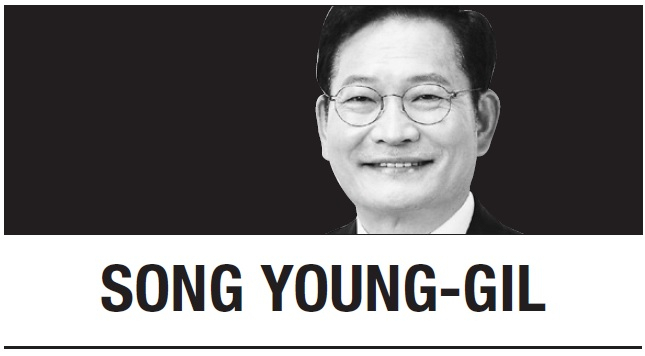
Increasing the share of nuclear energy to replace renewable energy is considered a move against carbon neutrality. Whenever the current South Korean government insists on the legitimacy of its pro-nuclear energy policy, France, a powerhouse in nuclear energy, is cited as a successful case.
However, a closer look at France’s nuclear power policy within the framework of its energy mix shows that Korea and France are quite different in many aspects. The two nations' energy policies share some similar elements but there are differences in their approaches.
First of all, Korea and France have nuclear power policies that differ widely in terms of managing radioactive waste disposal facilities and using nuclear power as a means to empower renewable energy. France has the highest share of nuclear energy in the world, accounting for 69 percent of its energy mix. France's dependence on nuclear energy is at least double that of Korea. However, if we take this number out of context, we are likely to misunderstand the importance of renewable energy in France.
The Macron administration is pursuing the energy transition in two directions. One is by expanding the share of renewable energy, and the other is by reducing nuclear's share in electricity generation. As of 2021, the share of renewable energy stood at 23.6 percent after a steep hike over a few years. Meanwhile, coal-fired power generation, the main culprit of carbon emissions, has practically been phased out in France. The country has driven out coal-fired electricity generation through a complementary mix of nuclear and renewable energies. However, in Korea, coal-fired power generation accounts for 34 percent of its total electricity.
France’s attempts to reduce nuclear energy's share in its electricity generation and expand renewable energy's portion instead have not been so smooth. The original goal was to lower the share of nuclear power from 70 percent to 50 percent by 2025, but the target year was put back 10 years to 2035 under the Macron government. The road to carbon neutrality by 2050 seems to have become more difficult. Nevertheless, French President Emmanuel Macron has vowed to raise renewable energy's share above 40 percent by 2030, no matter how difficult that may be.
France’s nuclear power policy -- including the shutting down of old nuclear power plants -- provides some insights for Korea. A case in point is the Fessenheim nuclear plant, which was permanently closed in 2020. In general, the lifetime of a nuclear plant is about 40 years but can be extended up to 60 years through proper reinforcement works. The Fessenheim had operated for 42 years until it was closed in 2020. The nuclear power industry claimed that it could operate for more than 20 years through 2041. The Macron government’s solution was to establish a mechanism to compensate for the closure of a nuclear power plant under the assumption of 60 years of operation. Specifically, in order to cover the estimated loss of the Fessenheim company, the Macron government estimated electricity sales proceeds from the plant at 400 million euros ($424 million) under the premise that it would keep operating until 2041.
Korea has not taken such measures in closing nuclear power plants. The Korean government seems to attribute Korea Electric Power Corp. (KEPCO)’s deficit to the shutting down of nuclear power plants, without taking such fundamental measures. Obviously, KEPCO’s loss is closely related to the rise in raw material prices, so measures to compensate for its loss should not be ignored. In this respect, the Fessenheim case shows a way to incorporate a profit-loss structure into a policy to close nuclear power plants.
Another lesson from France’s energy policy is that nuclear power plants should be backed by the sustainable management of nuclear waste. Critics liken Korea’s nuclear power policy having no waste management plan to “an apartment without a bathroom.” As for nuclear waste disposal facilities in Korea, it took more than 30 years to construct a medium- and low-level radioactive waste disposal facility. Following twists and turns, such as the strong opposition of local residents of the island of Gureop-do in Incheon and Buan County, North Jeolla Province, the facility was finally built in Gyeongju, North Gyeongsang Province. What's worse, the plan to construct a high-level radioactive disposal facility by 2050 has a long way to go. The Korean government has not even secured an underground research facility, which is a prerequisite for constructing such a waste disposal facility. It is only a matter of time before the current waste disposal capacity reaches saturation.
As a nuclear power plant was included in the European Union’s Green Taxonomy, it is deemed an element of carbon neutrality. There is no reason to deny the role of safe nuclear power plants backed by proper waste disposal facilities. The first step is for the National Assembly to set up an institutional framework for safe nuclear power plants. Related bills have already been submitted to the National Assembly.
To dispel Korea’s image as a country economically advanced but backward in terms of its climate change policy, all stakeholders must get involved in the energy transition to decarbonization. The government must recognize nuclear power and renewable energy as complementary energy sources that go hand in hand. Carbon-emitting companies required to produce their goods using renewable energy need to draw up action plans regarding RE100, the global renewable energy initiative of businesses through investments in renewable energies and the recycling of resources.
Song Young-gil
Song Young-gil is a visiting professor at the ESCP Business School in France and an executive adviser to the Democratic Party of Korea (DPK). He is the former chairman of the DPK. The views expressed here are his own. -- Ed.







![[Today’s K-pop] Blackpink’s Jennie, Lisa invited to Coachella as solo acts](http://res.heraldm.com/phpwas/restmb_idxmake.php?idx=644&simg=/content/image/2024/11/21/20241121050099_0.jpg)